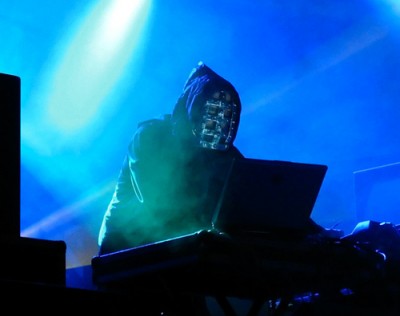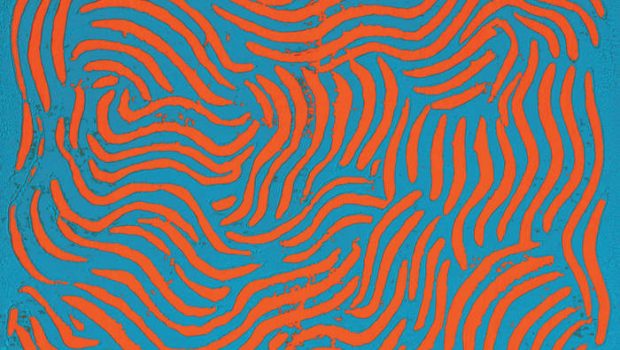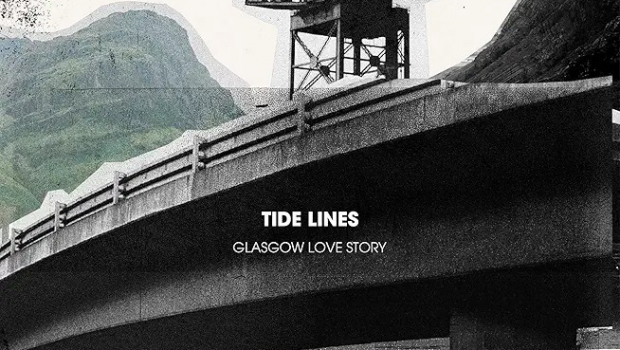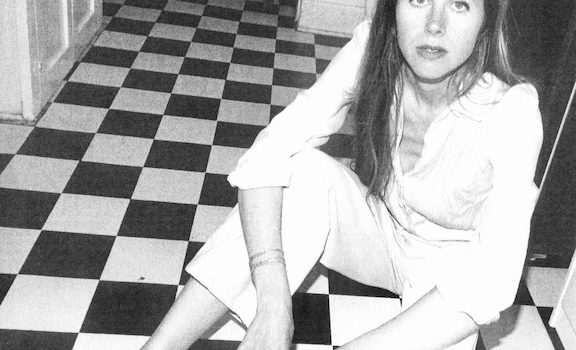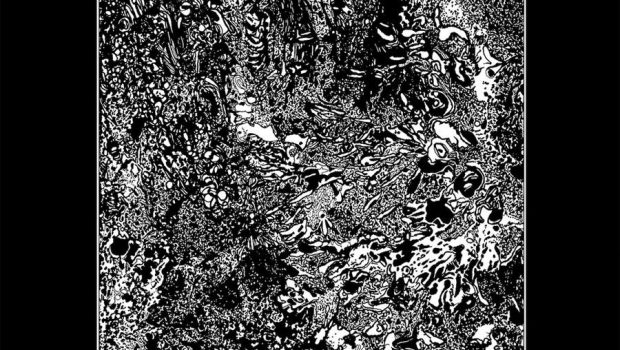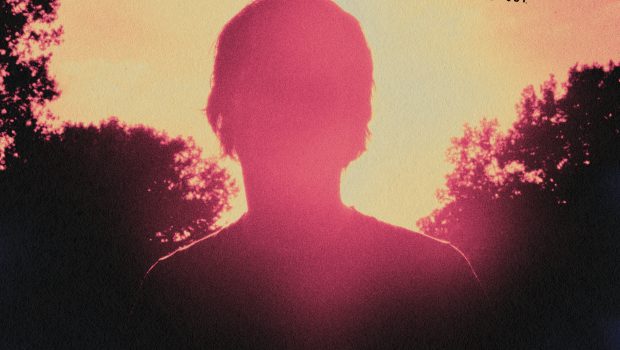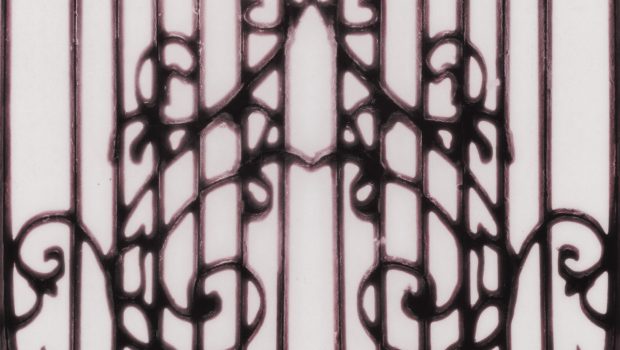It’s freezing in Salford. The snow from the coldest November in years has given way to a hard layer of ice on the pavement, making the route to Islington Mill all the more treacherous yet picturesque. The ice sheet gives Salford’s tower blocks and the Mill, a remnant of the area’s industrial past, tucked away behind a playground a harsh sort of beauty.
Inside a single greenish blue spotlight casts an icy glow against the white back wall that frames the stage, giving the Mill the feel of an igloo. The space feels fitting for a night of cold, machine-based soundscape music, and particularly apt for an artist like Tim Hecker- cold landscapes is a theme on his album, Haunted, ‘Song for Tundra’ being one of the stand out tracks. It’s a very broad church, but on the whole, techno (a misnomer, but still a word I’ve got used to using as shorthand for all technology-based music with a futuristic aesthetic) is cold music. Experimental, beatless, ambient techno can be a colder experience still. From Boards of Canada to Biosphere, Cari Lekebush to Kraftwerk, I get the sense that many of the practitioners of this type of machine music, sometimes hard and clinical, sometimes moody and unsettling, whether dance-floor orientated or that of the more introspective variety, are informed by their wintry environments.
Hecker is no exception. Hailing from Montreal where temperatures can reach minus forty (ten degrees off where metal breaks), he’s no stranger to a woolly jumper. The distinctive take on machine music of artists like Deadbeat, Mike Shannon and Akufen has, over the past ten years, made Montreal a hot-bed for experimental electronic music to rival Berlin. Akufen’s glitchy, cut-up experiments with transistor radios are allied to kick drums and disco basslines, making his music experimental yet always geared toward the dancefloor. Hecker is a different beast. As an ambient soundscape artist, he comes from a school of music not aimed at the dancefloor; his palette doesn’t include the snares, kick drums and high-hats of the 4/4 squad, but rather subtle textures, field recordings, synth sounds, bass rumbles and sequences, that morph cleverly, undulatingly into melodies.
This is challenging music. In the same way that going to see a film or a play requires us to suspend our disbelief, or how we have to try and zone out and ‘feel’ when presented with a sound or video art installation, Hecker’s music challenges the audience (as does that of the supporting acts, Gate and Astral Social Club). It is music that needs us to engage, to feel, to ‘buy into’. The problem is, I’m not sure if I can always buy into it. Techno is music that is based around the primacy of sound over melody: sound for its own sake. But often there is complex percussive interplay between compressed kicks and high-hats, gated cut-ups and editing trickery to focus the mind and move a dancefloor. There’s more to latch onto. But as I was saying, ambient techno is a horse of a different colour. A techno producer once told me that it is the easiest, laziest kind of music to make, but to make it well is extremely difficult.
Listening to the music on offer here tonight I, at times, am finding it hard to tell the difference between the sublime and the ridiculous. I feel like a philistine, particularly when I’m told that Gate, the second supporting act, is from legendary New Zealand noise rock band, The Dead Sea, and is doing a rare UK performance. What I see is a man playing a long, unstructured, set of chords, seemingly in love with the sounds he is getting out of his guitar pedals with little or no regard for a seated audience, who are quietly and politely indulging his own self- indulgence. It reminds me of a teenager with a new guitar pedal, playing his guitar in the garage after smoking one too many special cigarettes. But just before I myself go to have a cigarette out of sheer boredom, he gets his laptop out, and through the speakers comes some synth chords reminiscent of Aphex’s Selected Ambient Works, with sublime metallic percussion. His set is protracted; encompassing what seems like two long songs that last thirty minutes each, and by the end I’ve entered into a semi-meditative state. Yet at times, with all the acts on offer, I’m finding it hard to stay focused in an attempt to differentiate between what is masterful immersive artistry and what is cacophonous dirge.
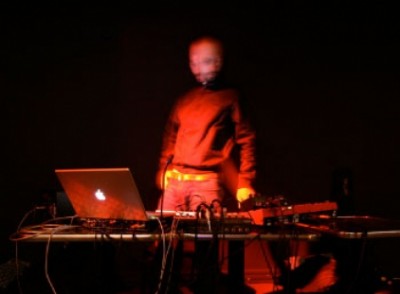 This is certainly the case with the first act, Astral Social Club. Much of the fun to be derived from this lively, slightly frightening bald man’s set, is trying to figure out what he’s actually doing. A.S.C plays on his knees in front of a low table with an array of peddles and circuitry, growling into a microphone, sampling live and looping the sounds into layers of noise. He’s certainly not dull to watch, moving all over the stage in constant interaction with his gadgets. It’s controlled chaos. At times it all feels like it’s going to fall apart, but he manages to hold it together and stay engaging throughout. There are elements of Venetian Snares in the music, or noise bands like Merzbow and Throbbing Gristle, but he most reminds me of the musician character played by Noel Fielding in Nathan Barley, whizzing around making noise with his complex DIY hardware. I half expected him to start shouting, “Where’s the Ice cream? Where’s the Ice cream?”
This is certainly the case with the first act, Astral Social Club. Much of the fun to be derived from this lively, slightly frightening bald man’s set, is trying to figure out what he’s actually doing. A.S.C plays on his knees in front of a low table with an array of peddles and circuitry, growling into a microphone, sampling live and looping the sounds into layers of noise. He’s certainly not dull to watch, moving all over the stage in constant interaction with his gadgets. It’s controlled chaos. At times it all feels like it’s going to fall apart, but he manages to hold it together and stay engaging throughout. There are elements of Venetian Snares in the music, or noise bands like Merzbow and Throbbing Gristle, but he most reminds me of the musician character played by Noel Fielding in Nathan Barley, whizzing around making noise with his complex DIY hardware. I half expected him to start shouting, “Where’s the Ice cream? Where’s the Ice cream?”
The music of Hecker can sometimes be classed alongside that of electronic producers like Ulrich Schnauss. Schnauss’ music exists at the more melody-driven, less abrasive end of the ambient spectrum. It’s mood music, but with tunes. But I feel that both artists have taken the baton of what was once called shoe-gaze. And it was Kevin Shields of My Bloody Valentine, when differentiating himself from the other shoe-gaze bands at the time, made a distinction which I feel is useful in separating the artists like Schnaus and, say Solar Bears, from artists like Hecker and Christian Fennez. Shields says that MBV’s music is “dry” whereas that of slowdive et al is “wet”- all lovely chorus guitar pedals, reverb, dreamy female harmonies. Shields’ music is more abrasive. It has a similar effect, but it is more impactful because it is arrived at through less easy techniques. Where Schnauss is all lush, dreamy production and warm melodies, the beautiful moments in Hecker’s set tonight co-exist as gentle respite with the glitches and noise. There’s beauty floating amongst the static and ‘found sounds’. There are lovely loops where something that sounds like a choral extract from Debussy hangs underneath the digital distortion. Under the a menacing bass rumble, like that on the soundtrack to a David Lynch movie, some lovely sequences occasionally glide in and evaporate like smoke. It’s strange music. Generally it is an amorphous stew of sound. It’s a different kind of gig that not everyone is used to, and there is certainly a place for it, but the 50 minutes that Hecker plays for is probably about right for how much an audience can take when it comes to amorphous ambient creations.
Jimi Hendrix famously said that there were only two types of music: good and bad. But there’s definitely some grey area here. Am I not engaging properly with the artists’ mind-sets sufficiently to ‘feel’ something from the subtle sound textures, or is this music at times just a bit shite? I think it’s a bit of both. There were some beautiful moments, and kudos to Henry Tadros of MIE productions for curating another night of music with a unity of vision by interesting artists that have a musical commonality, but a casual listener on a night out might ultimately be left a bit cold.
